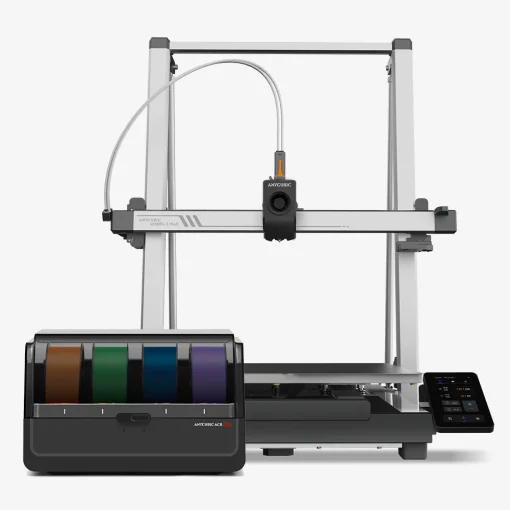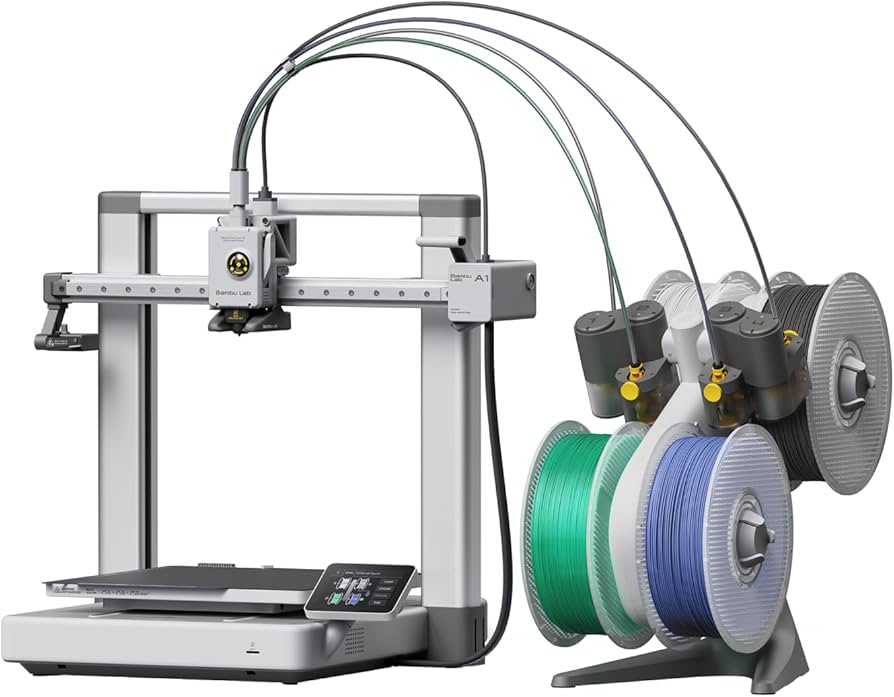Compare Kobra 3 Max Combo vs A1
Comparison between the best 3D printers
Choose the best 3D printer at the best price. The cheapest 3D printers are here.
Buy a 3D printer here with 3D Fila.
 |
 |
|
| Model | Kobra 3 Max Combo |
A1[BUY A1] |
| Printing Material | Filament | Filament |
| Buy Filament for Anycubic Kobra 3 Max Combo | Buy Filament forBambu Lab A1 | |
| Estimated price | $699,00 | $700,00 |
| Manufacturer | Anycubic | Bambu Lab |
| Release Year | 2025 | 2023 |
| Print Volume [mm] | 420x420x500 | 256x256x256 |
| Printer Size [mm] | 640x753x706 | 385x410x430 |
| Weight [kg] | 23,6 | 8,3 |
| Power Loss Recovery | YES | YES |
| Enclosed printer | NO | NO |
| Bed Leveling | Automatic | Automatic |
| Filament End Sensor | YES | YES |
| Bed type | Heated | Heated |
| Power supply system | Bowden | Direct Drive |
| Standard nozzle | 0,4 | 0,4 |
| Maximum Nozzle Temperature [°C] | 300 | 300 |
| Maximum Bed Temperature [°C] | 90 | 100 |
| Maximum printing speed [mm/s] | 600 | 500 |
| Filament holder | YES | YES |
| Camera for supervision | YES | YES |
| Recommended filaments | PLA, PETG, TPU | PLA, PETG, TPU, PVA |
| Recommended slicers | Anycubic Slicer, Cura, Orca Slicer | SuperSlicer, PrusaSlicer, Cura, OrcaSlicer |
| Maximum Resolution [mm] | 0,01 | 0,1 |
| Processor | ||
| Display | Touchscreen 4,3'' | Touchscreen 3,5 |
| Power Supply | 800 W | 350 W |
| Connectivity | USB, Wifi | Wi-Fi, Bambu-Bus, Cartão Micro SD |
| Operating systems | Windows, Mac, Linux | Windows, Linux, Macbook |
| Date of registration in the system | 2025-03-06 | 2024-07-17 |
| Release date | 2025 | 2023 |
| Extra features | The Anycubic Kobra 3 Max Combo combines high-speed and multicolor printing with up to 8 colors. It features automatic leveling, quick filament switching, clog and entanglement detection, and AI to prevent print failures. Its 800W hotbed heats up quickly, while 10,000mm/s² acceleration ensures efficiency. App and Wi-Fi control, print recovery, and video monitoring enhance the user experience. | The BambuLab A1 printer features fully automatic calibration, multi-color printing with the AMS system, active flow rate compensation, quick nozzle change with a clip, active motor noise cancellation, a build volume of 256x256x256 mm³, a maximum extruder temperature of 300°C, and a heated bed of up to 100°C. In addition, it has high precision, a machine health management system and an intuitive 3.5-inch touchscreen interface. |
| Support for multiple colors and materials (AMS and CFS) | YES | YES |
Notes * |
||
| Cost-benefit | 7 / 10 | 7 / 10 |
| Hardware | 5.4 / 10 | 4.2 / 10 |
| Tela | . | . |
| Print volume | 4 / 10 | 4 / 10 |
| Performance | 5 / 10 | 4 / 10 |
| [BUY A1] |
Conclusion |
| In concluding the comparison between the Anycubic Kobra 3 Max Combo and the Bambu Lab A1, both printers offer a robust set of features tailored for different user needs, with competitive pricing. The Anycubic Kobra 3 Max Combo stands out with its significantly larger print volume, allowing for the creation of more substantial prints. Its higher printing speed also enhances productivity, while features like AI-supported print failure detection and a user-friendly 4.3-inch touchscreen add to the overall experience. However, its weight and larger footprint might be a consideration for users with space constraints. On the other hand, the Bambu Lab A1, despite its smaller build volume, shines with features designed for precision and ease of use, such as fully automatic calibration and innovative active flow rate compensation. Its lower power consumption and lighter build make it a more portable option. With its 3.5-inch touchscreen and stable multi-material support, it also offers a compelling solution for users focused on versatility and detail. Ultimately, the choice between these two models may hinge on specific printing needs and preferences. Users prioritizing larger prints and faster production will likely find the Anycubic Kobra 3 Max Combo more appealing, while those seeking a compact, feature-rich printer with high precision might prefer the Bambu Lab A1. Both models represent solid options in the 3D printing market, allowing users to select based on their individual requirements and priorities. |

